Crucial BX100 1TB SSD Review
Why you can trust Tom's Hardware
PCMark 8 Advanced Workload Performance
To learn how we test advanced workload performance, please click here.
Throughput Tests
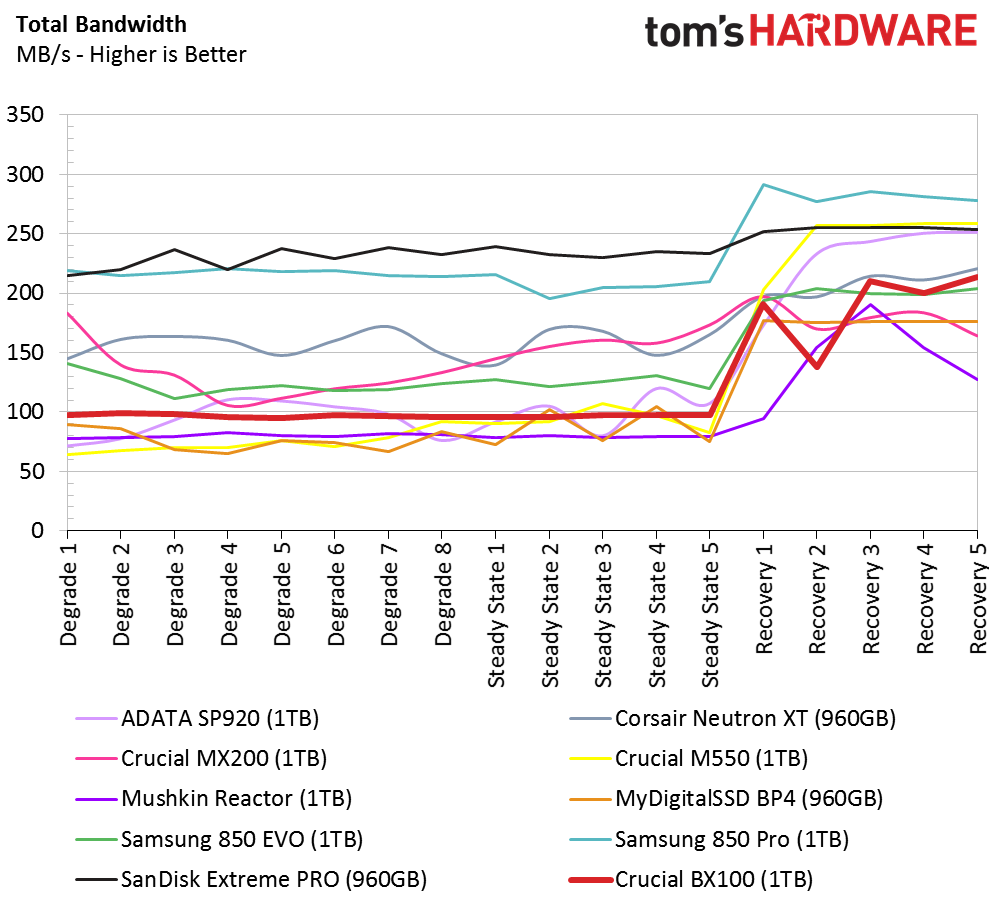
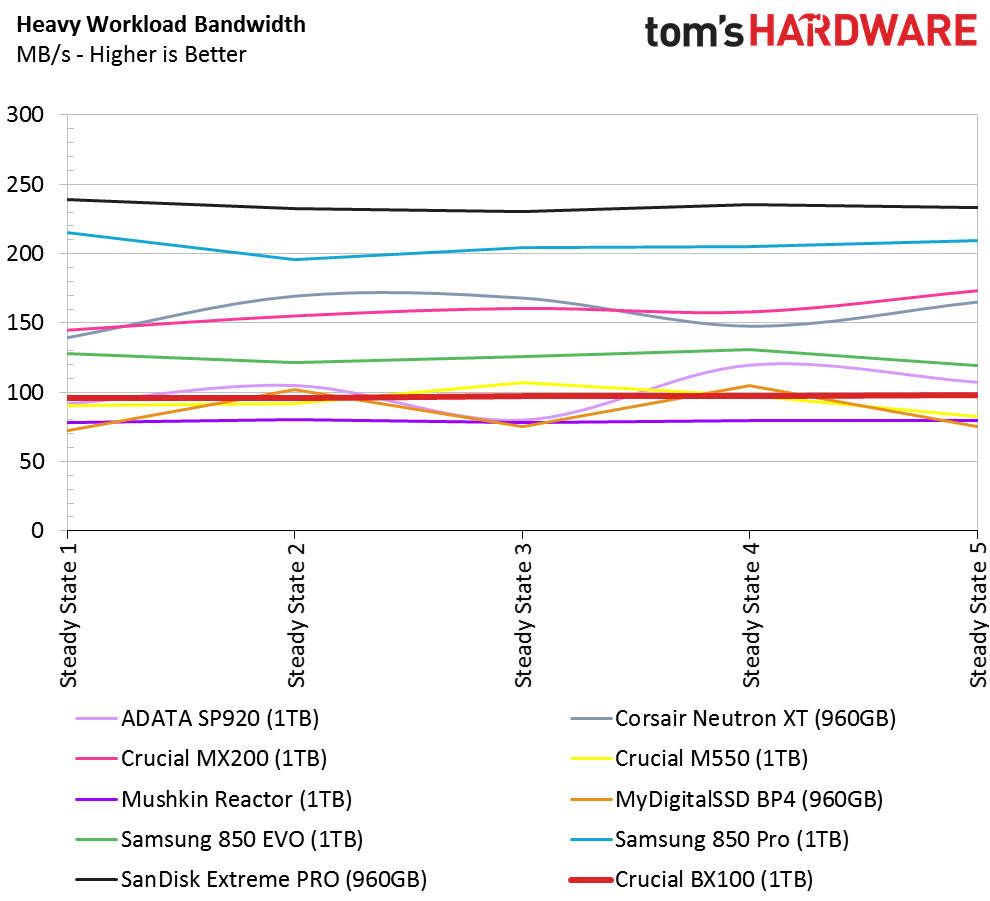
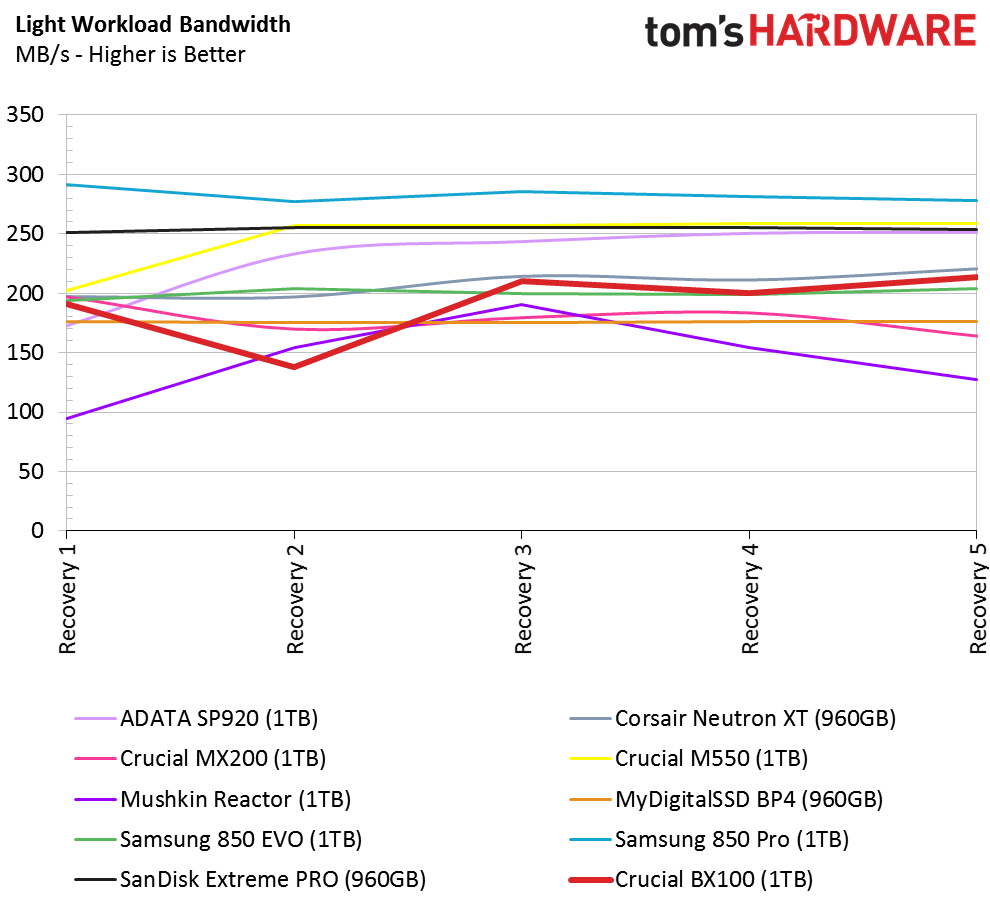
Under taxing workloads, Crucial's BX100 1TB is consistent. However, it's pretty slow with a lot of data on the drive. Of course, these tests are random read and write-heavy, so the outcome isn't surprising. A more typical consumer workload gives the drive time to recover, and performance increases as a result. Most enthusiasts fall into that category, spending more time idle than reading or writing.
Latency Tests
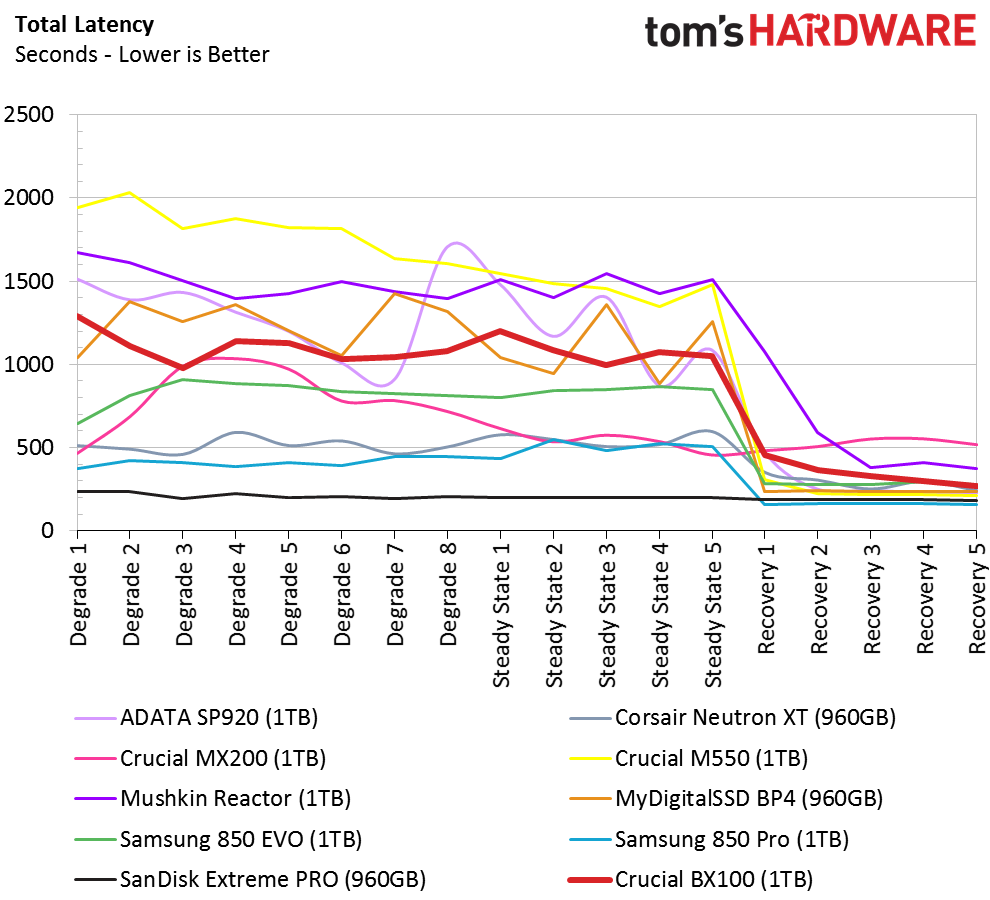

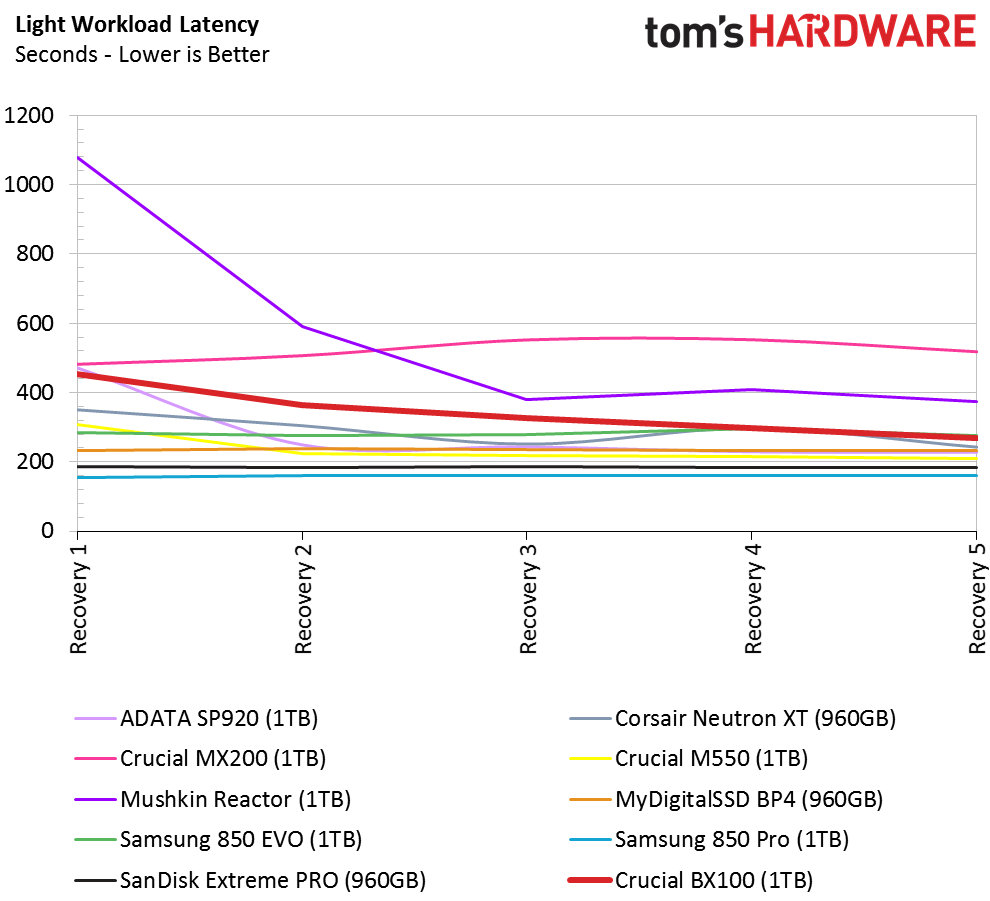
High throughput is nice, but it's rare to open an application and wish for more peak throughput. Rather, we launch a program and complain about how long it takes to respond. In this chart, we see tasks measured in time rather than megabytes per second.
As with our throughput results, the BX100's steady state latency is consistent. Tasks do take longer to complete on Crucial's drive compared to some of the more expensive SSDs out there. For example, SanDisk's Extreme Pro 960GB delivers arrow-straight performance, finishing the test in around 200 seconds. The BX100 takes between 1000 and 1200 seconds. When you do the math, the difference comes out to around 34 minutes per work week, or roughly 29 hours a year of waiting for software to load and tasks to complete.
The BX100 closes the gap under typical consumer workloads with sufficient idle time between tasks. This reaffirms that it's important to keep your workload in mind when choosing your SSD. It's easy to buy the best without a second thought. But if you want to save money, you can choose a lower-cost model like the BX100 and still blow past a hard drive's best effort.
Get Tom's Hardware's best news and in-depth reviews, straight to your inbox.
Current page: PCMark 8 Advanced Workload Performance
Prev Page PCMark 8 Real-World Software Performance Next Page Notebook Battery Life
Chris Ramseyer was a senior contributing editor for Tom's Hardware. He tested and reviewed consumer storage.